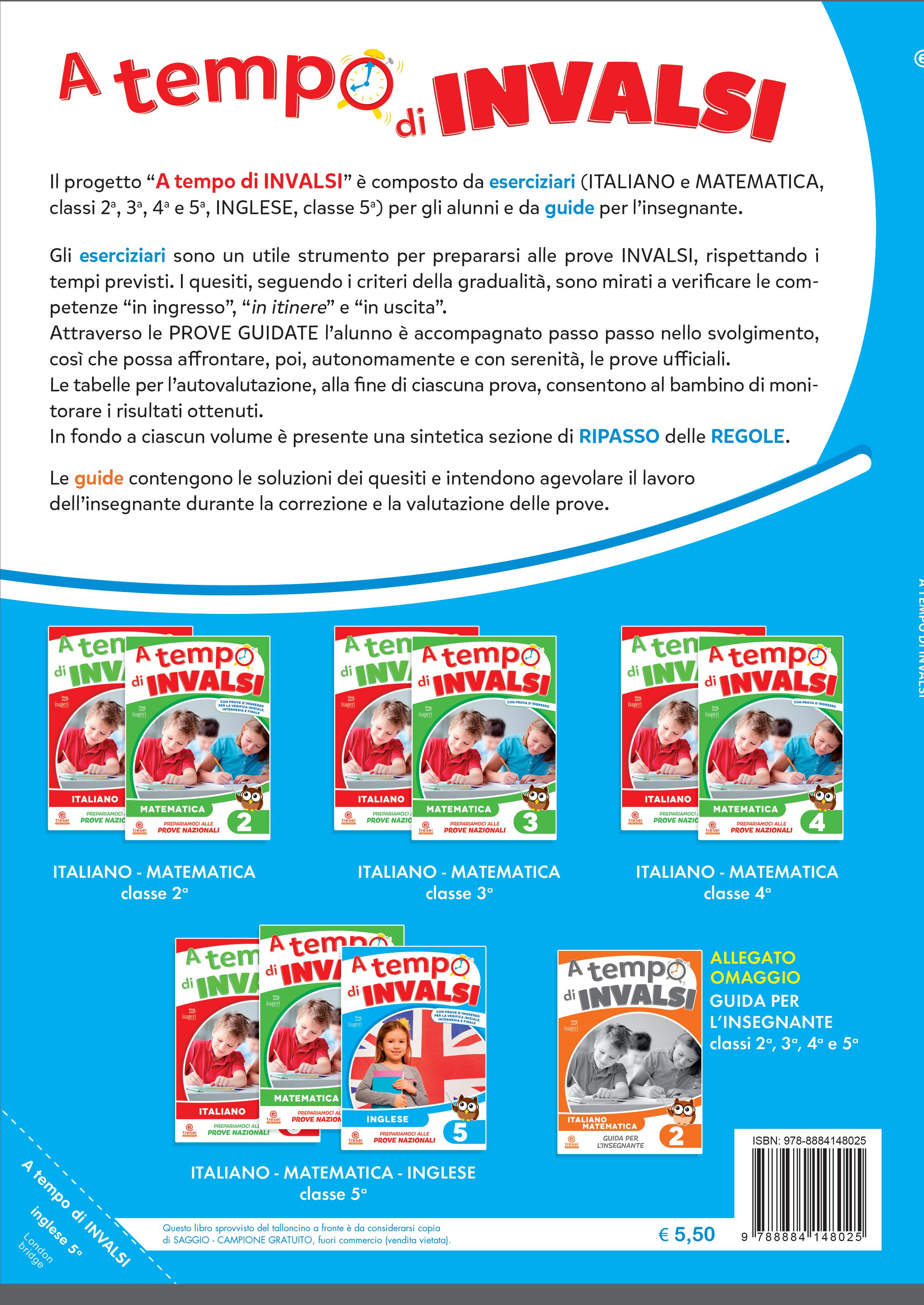ISTRUZIONI PER LA PROVA INVALSI DI INGLESE
La prova è divisa in due parti. Nella prima parte dovrai leggere con attenzione un breve testo in lingua inglese e rispon dere alle domande che troverai subito dopo. Se trovi nel testo delle parole che non conosci, prova a cercare il loro significato nel glossario che trovi in fondo alla pagina:
GLOSSARY
personality: shy: sensitive: friendly: extroverted:
personalità timido sensibile amichevole estroversa
Per ogni domanda ci sono quattro risposte, ma una sola è quella giusta. Prima di ogni risposta c’è un quadrato con una lettera dell’alfabeto:
A

,
B
,
C
,
D
.
Per rispondere, metti una crocetta nel quadratino accanto alla risposta (una sola) che ritieni giusta, come nell’ esempio 1 :
ESEMPIO 1
What is it?
A. B. C. D.
It’s a dog
It’s a bee

It’s a butterfly
It’s a bird
3
Se ti accorgi di aver sbagliato, puoi correggere: devi scrivere NO vicino alla risposta sbagliata e mettere una crocetta nel quadratino accanto alla risposta che ritieni giusta, come nel’esempio 2.
ESEMPIO 2
What is it?
NO
A. B. C. D.
It’s a dog
It’s a bee

It’s a butterfly
It’s a bird
Nella seconda parte della prova ti verranno posti quesiti di grammatica. Per fare una prova, ora rispondi a questa domanda.
Quale di queste frasi è scritta correttamente?
A. B. C. D.
My book is these
My isn’t book this
This is my book
Is these my book
4
INIZIALE (svolgimento guidato) data: HELLO FROM LONDON!
PARTE PRIMA
minuti
tempo stabilito dall’insegnante
Leggi il testo con attenzione e scopri il significato di alcune parole che forse non conosci. Poi, rispondi alle domande.
My name is Max and I’m eleven years old. I attend primary schoo l in London. I have a sister. She’s thirteen. Her name is Julia. We have very different personalities.
I’m shy and sensitive, Julia is friendly and extroverted. I like Maths and Science and I want to be an engineer. She likes History and English, and she wants to be a writer.
In my class, there are twelve boys and thirteen girls, and we are all good friends. I sit next to John. He’s always happy and he likes to play football. He can speak Italian because his mother, Marta, comes from Rome, in Italy. My best friend is Kevin. He’s funny and adventurous. He wears glasses, and he’s a very good student. Kevin loves animals. He has got a dog, a parrot and a goldfish. He can ride a horse, play tennis and swim.
I can’t ride a horse, but I can swim and play the piano. I have piano lessons on Monday and Wednesday every week!
GLOSSARY
personality: shy: sensitive: friendly: extroverted: engineer: writer: adventurous: (to) wear glasses: goldfish:

personalità timido sensibile amichevole estroversa ingegnere scrittore avventuroso portare gli occhiali pesce rosso
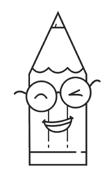
5 I LIVELLO
PROVA
1 2 3 4 5 6 7 8 9 10 11 12 13 14
How old is Julia? A1
A. B. C. D.
She’s 13 She’s 30
She’s 11 She’s friendly and extroverted
COME SI SVOLGE?
• Per rispondere al quesito A1, leggi alla riga 2:
• A chi si riferisce il pronome “she”?
I have a sister. She’s thirteen. Her name is Julia (...). Max’s sister, Julia Max
• Ora devi ricordare la corrispondenza tra numeri scritti in cifre e in lettere.



13 9 thirty 70
11 16 30 nine seventy seventeen 17

Colora allo stesso modo gli stessi numeri scritti in cifra e in lettere. sixteen eleven thirteen
• Ora rispondi al quesito A1
6 I LIVELLO PROVA INIZIALE (svolgimento guidato) Competenze “in
ingresso”
Julia is... A2
A. B. C. D.
very similar to her brother very different from her brother shy and sensitive funny and adventurous
COME SI SVOLGE?
• Per rispondere al quesito A2, leggi alle righe 2-3:
• Chi è il soggetto di questa frase? Ovvero, a chi si riferisce il pronome perso nale “we”?
• Indica il sinonimo della parola “different”.
Her name is Julia. We have very different personalities. Me (Max) and my sister Julia Me (Max) and my school friends Not similar Similar friendly shy
• Colora di rosa gli aggettivi che si riferiscono a Julia e di blu quelli riferiti a Max.
funny sensitive extroverted adventurous


• Ora rispondi al quesito A2.

7 I LIVELLO
PROVA INIZIALE (svolgimento guidato) Competenze “in ingresso”
What are Max’s favourite subjects? A3 Gymnastics and Geography
A. B. C. D.
We don’t know Maths and Science English and History
COME SI SVOLGE?
• Per rispondere al quesito A3, leggi alle righe 4-6:
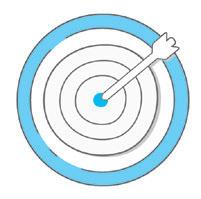
I’m shy and sensitive, Julia is friendly and extroverted. I like Maths and Science, and I want to be an engineer. She likes History and English and she wants to be a writer.

• Ora completa la tabella.

Favourite subjects Max Julia Maths Science History English
Prova ora a scrivere quali sono le tue materie preferite, rispondendo alla domanda: “What are your favourite subjects?”

8 I LIVELLO PROVA INIZIALE (svolgimento guidato)
Competenze “in ingresso”
• Scrivi sotto ogni immagine la materia giusta, scegliendo tra quelle indicate: MATHS SCIENCE




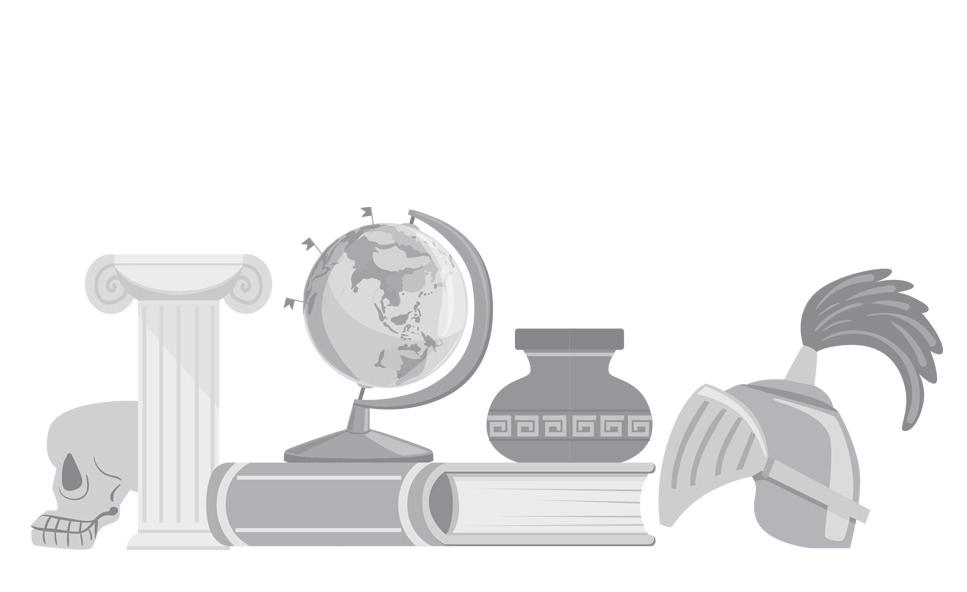

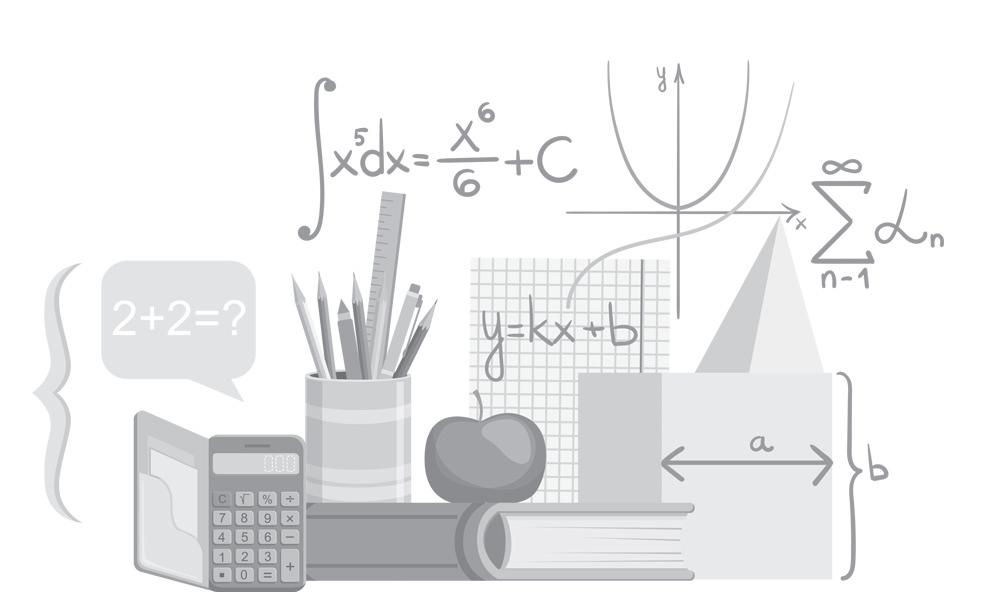

ENGLISH HISTORY
GYMNASTICS GEOGRAPHY
• Ora rispondi al quesito A3
9 I LIVELLO
PROVA INIZIALE (svolgimento guidato) Competenze “in ingresso”
How many children are there in Max’s classroom? A4
A. B. C. D.
We don’t know
Twenty-five children Thirteen children Twelve children
COME SI SVOLGE?
• Per rispondere al quesito A4, leggi alla riga 7:
In my class, there are twelve boys and thirteen girls boys girls

• La parola “children” indica e comprende tutti gli studenti della classe di Max: maschi e femmine. Indica in cifra quanti sono, rispettivamente:

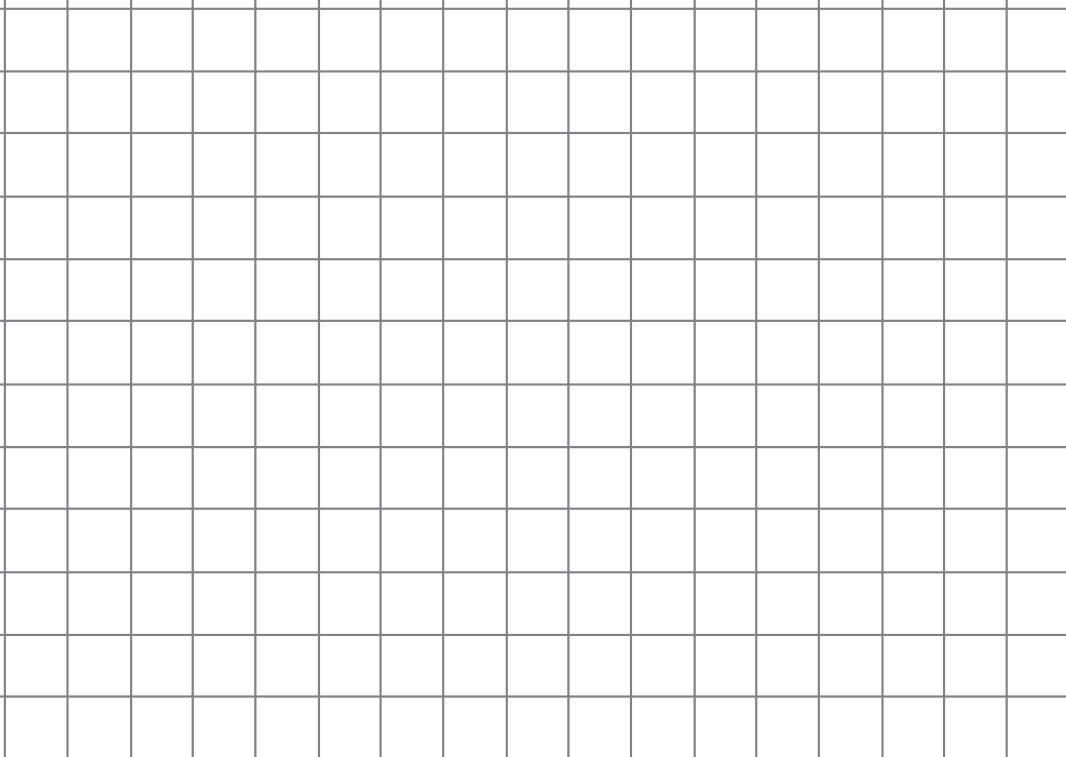

• Quindi, scrivi e risolvi l’operazione da svolgere per conoscere il loro numero totale.
• Scrivi il numero che hai ottenuto in lingua inglese:
• Ora rispondi al quesito A4
10 I LIVELLO PROVA INIZIALE (svolgimento guidato) Competenze
“in ingresso”
How many children come from Rome? A5
A. B. C. D.
All the children No children, but John’s mother
One child: Max Twelve children

COME
SI SVOLGE?
• Per rispondere al quesito A5, leggi alle righe 8-9 e rispondi:

He can speak Italian because his mother, Marta, comes from Rome, in Italy.
• Marta è una studentessa?
• Sottolinea, nel testo riporta to sopra, l’aggettivo possessi vo che mette in relazione Mar ta e il bambino che sa parlare italiano. Sai indicare chi è?
John Max

• Sono nominati, nel testo, bambini che vengono da Roma?

Sì No
• Ora rispondi al quesito A5
Sì No
POSSESSIVE ADJECTIVES
pronome soggetto aggettivo possessivo I my you your he his she her it its we our they their
11 I LIVELLO
(svolgimento
Competenze “in
PROVA INIZIALE
guidato)
ingresso”
What can Max’s best friend do? A6
A. B. C. D.
He can play football
He can play the piano
He can speak Italian
He can ride a horse, play tennis and swim
COME SI SVOLGE?
• Per rispondere al quesito A6, devi individuare chi è il migliore amico di Max. Vai alla riga 10:
My best friend is Kevin.


• Se continui a leggere, alle righe 11-12, trovi la descrizione del profilo di Kevin.

He can ride a horse, play tennis and swim.

Per essere sicuro di aver compreso il significato di quanto hai letto, collega (a pagina successiva) a ogni immagine il verbo che la descrive. Quindi, com pleta la frase scrivendo ciò che tu sai fare:
I can
12 I LIVELLO PROVA INIZIALE (svolgimento guidato) Competenze “in
ingresso”
TO PLAY FOOTBALL TO RIDE A HORSE




• Scrivi sotto ogni immagine il verbo giusto, scegliendo tra quelli indicati: TO PLAY TENNIS TO SWIM


TO PLAY THE PIANO TO SPEAK ITALIAN
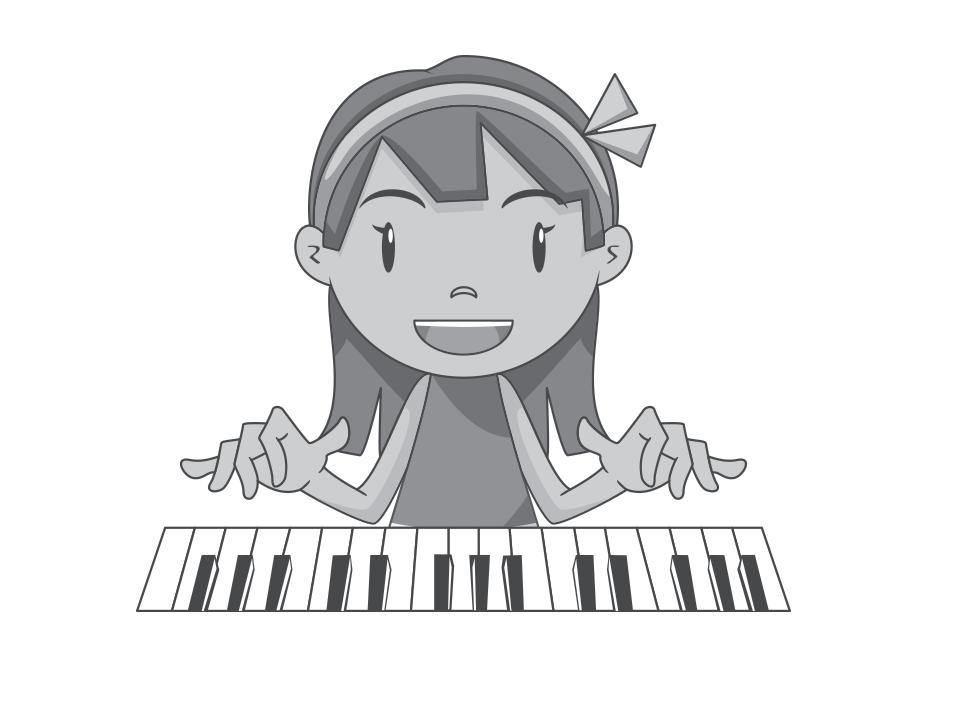
• Ora rispondi al quesito A6

13 I LIVELLO
PROVA INIZIALE (svolgimento guidato) Competenze “in ingresso”
In base al testo che hai letto, scegli l’affermazione che ti sembra più corretta. A7
A. B. C. D.

Max likes all his schoolfriends
Max loves his sister, but he hasn’t got good friends at school Max doesn’t like his class
In Max’s class the boys and girls are not friends

COME SI SVOLGE?
• Per rispondere al quesito A7, devi aver compreso in generale il testo che hai letto. In particolare, l’espressione utilizzata da Max alla riga 7, potrebbe aiutarti a scegliere la risposta corretta.
(...) we are all good friends.
• A chi si riferisce questa espressione?
Alla famiglia di Max
A tutti i bambini (maschi e femmine) della classe di Max

A tutte le bambine della classe di Max
• Ora rispondi al quesito A7.
14 I LIVELLO PROVA INIZIALE (svolgimento guidato)
Competenze “in ingresso”
PARTE SECONDA
Scegli il modo giusto di completare la frase: B1
one child in the classroom.

A. B. C. D.
There are Are there Is there There is
COME SI SVOLGE?
• Per rispondere al quesito B1 devi ricordare come si utilizza “There” al singo lare e al plurale.
THERE IS / THERE ARE FORMA AFFERMATIVA FORMA NEGATIVA FORMA INTERROGATIVA
Singolare There is (There’s) Singolare There isn’t (There is not) Singolare Is there ...?

Plurale There are Plurale There aren’t (There are not) Plurale Are there ...?



Per ogni frase, inserisci “THERE IS” o “THERE ARE”.
• nine apples on the table.
• a little dog in my car.
• Ora rispondi al quesito B1.
• an egg in the basket.
• forty flowers for you.
15 I LIVELLO
PROVA INIZIALE (svolgimento guidato) Competenze “in ingresso”
Scegli la domanda corretta per la seguente risposta: B2
There are twenty-two students in my class.


A. B. C. D.
How many students is there in your class?
How much students are there in your class?
How many students are there in your class?

How old are the students in your class?

COME SI SVOLGE?
• Per rispondere al quesito B2 devi ricordare come si formula una domanda riguardo a una quantità:
“How much?” e “How many?” si usano per informarsi sul quantitativo di qual cosa. Ecco alcune differenze nell’uso delle due forme.
HOW MUCH HOW MANY
Corrisponde a... Quanto? Quanta? Quanti? Quante? Quando si usa
Con i sostantivi non numerabili
How much milk is there in the fridge?
Con i sostantivi numerabili al plurale
How many eggs are there in the fridge?
Esempi
How much chocolate do you eat every day?
How many bananas do you eat every day?
16 I LIVELLO PROVA INIZIALE (svolgimento guidato) Competenze “in
ingresso”
• Scrivi per ogni soggetto una domanda sulla quantità, come negli esempi.

WATER

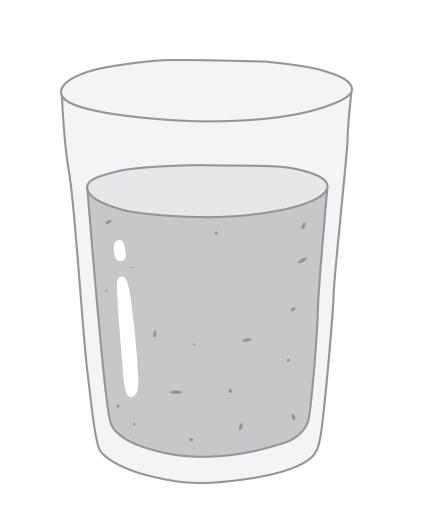
How much water is there?
CATS




BOOKS

• Ora rispondi al quesito B2
How many eggs are there?
EGGS CHEESE BREAD
17 I LIVELLO
PROVA INIZIALE (svolgimento guidato) Competenze “in ingresso”
Scegli la risposta corretta per la seguente domanda: B3
Have you got any pets?
A. B. C. D.
Yes, I have got a cat. His name is Tom Yes, he is Tom
Yes, I am. His name is Tom Yes, they have got a cat. Their name is Tom
COME SI SVOLGE?
• Per rispondere al quesito B3 devi ricordare come si formulano domande, risposte affermative e negative con il verbo “have got”.


HAVE GOT

FORMA AFFERMATIVA FORMA NEGATIVA
I’ve got you’ve got he/she/it’s got we’ve got they’ve got

(have got) (have got) (has got) (have got) (have got)
FORMA INTERROGATIVA
Have I got...? Have you got...? Has he/she/it got...? Have we got...? Have they got...?
I you he/she/it we they
haven’t got haven’t got hasn’t got haven’t got haven’t got
(have not got) (have not got) (has not got) (have not got) (have not got)
RISPOSTE BREVI
Yes, I have Yes, you have Yes, he/she/it has Yes, we have Yes, they have
No, I haven’t No, you haven’t No, he/she/it hasn’t No, we haven’t No, they haven’t
18 I LIVELLO PROVA INIZIALE (svolgimento guidato) Competenze “in
ingresso”
• Collega ogni domanda alla risposta esatta, facendo attenzione al soggetto.
Has she got blue eyes?
Have you got glasses?

Have they got a T-shirt?
• Scrivi le frasi seguendo l’esempio.




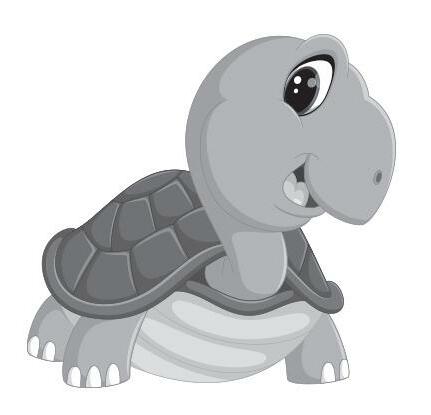
SANDRA
Sandra’s got a dog and a parrot.
JOHN

Yes, she has.
No, they haven’t. They have got a sweater.

No, I haven’t.

• Ora rispondi al quesito B3
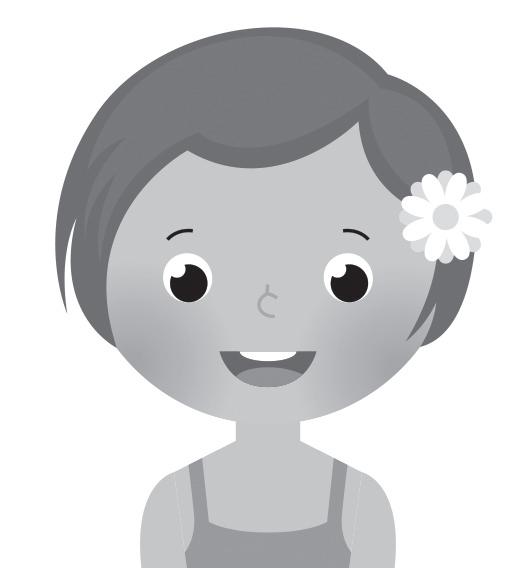
DAVID
JULIA
19 I LIVELLO PROVA
(svolgimento
Competenze “in
INIZIALE
guidato)
ingresso”
Scegli la parola giusta per completare la seguente domanda: B4 you like Maths?


Do Does A. B. Has When C. D.
COME SI SVOLGE?
• Per rispondere al quesito B4 devi ricordare come si chiedono e si esprimono preferenze, quindi come si utilizza “like”, insieme all’ausiliare DO.
FORMA AFFERMATIVA

I like you like he/she/it likes we like they like
FORMA INTERROGATIVA
Do I like...?

Do you like...? Does he/she/it like...? Do we like...? Do they like...?
TO LIKE
FORMA NEGATIVA
I you he/she/it we they
don’t like don’t like doesn’t like don’t like don’t like
RISPOSTE BREVI
Yes, I do Yes, you do Yes, he/she/it does Yes, we do Yes, they do
No, I don’t No, you don’t No, he/she/it doesn’t No, we don’t No, they don’t
20 I LIVELLO PROVA INIZIALE (svolgimento guidato) Competenze
“in ingresso”
ALEX MARY
• Osserva e indica se le seguenti affermazioni sono vere (True) o false (False).
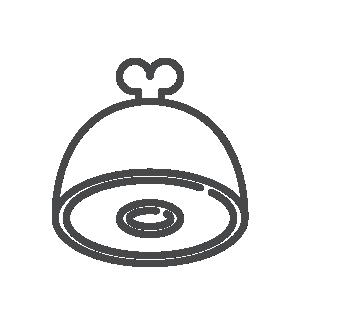

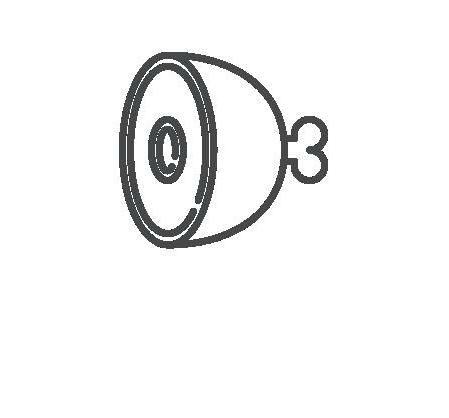

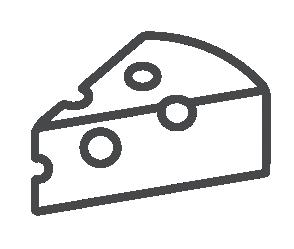

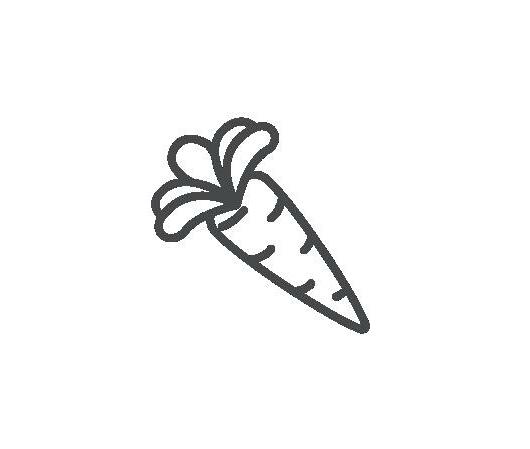




T F

Alex doesn’t like pizza.



Mary likes onions.
Alex and Mary don’t like onions.
Mary likes cheese.
• Sottolinea l’errore presente in ogni frase e riscrivila correttamente.
We doesn’t like vegetables.
George don’t like ham.
Julia like popcorn.
• Ora rispondi al quesito B4
21 I LIVELLO PROVA
Competenze “in ingresso”
INIZIALE (svolgimento guidato)
Scegli la domanda corretta per la seguente risposta: B5
Maths is Friday. up at A. B. on in C. D.

COME SI SVOLGE?
• Per rispondere al quesito B5 devi ricordare come si colloca un evento nel tempo.
PREPOSIZIONI DI TEMPO
IN ON AT
parti del giorno* I go to school in the morning. i giorni We can go on Sunday!
i mesi School starts in September.
le stagioni In the summer I go to the sea. gli anni It starts in 2019.
ore del giorno The lesson starts at nine o’clock.



le date School starts on September 14th. i pasti See you at lunchtime.
*ATTENZIONE: SOLTANTO nell’espressione AT NIGHT, AT viene utilizzato invece di IN. Mymotherworksatnight.
22 I LIVELLO PROVA INIZIALE (svolgimento
Competenze “in
guidato)
ingresso”
• Osserva il cartellone settimanale e completa seguendo l’esempio.






MONDAY TUESDAY WEDNESDAY THURSDAY FRIDAY
- When is Science?



- When is Maths?

- When is Geography?

-
• Completa inserendo IN, ON o AT.
Science is on Monday and Friday.
Art is on Thursday.
Music is on Monday.

the evening, we can go to the cinema.
I can go to Venice October 17th. We can meet nine o’clock the morning. What can we do Saturday night? The leaves fall autumn.
• Ora rispondi al quesito B5.
23 I LIVELLO
Competenze
PROVA INIZIALE (svolgimento guidato)
“in ingresso”
Scegli la corretta traduzione della seguente frase: B6

Il libro di mio fratello è sul tavolo.

A. B. C. D.
The book, my brother, is on the table
My brother’s book is on the table
My brothers’ book is on the table
My brother is on the table
COME SI SVOLGE?


• Per rispondere al quesito B6, devi ricordare come si indica il proprietario di un oggetto.

La forma possessiva si usa con i nomi che si riferiscono a persone e animali. Indica un rapporto di appartenenza. Per formare il possessivo, si aggiunge un apostrofo + s al nome. Se il nome è plurale, è sufficiente aggiungere un apostrofo dopo la s. Questa costruzione è nota con il nome di GENITIVO SASSONE. Ad esempio: John’s car
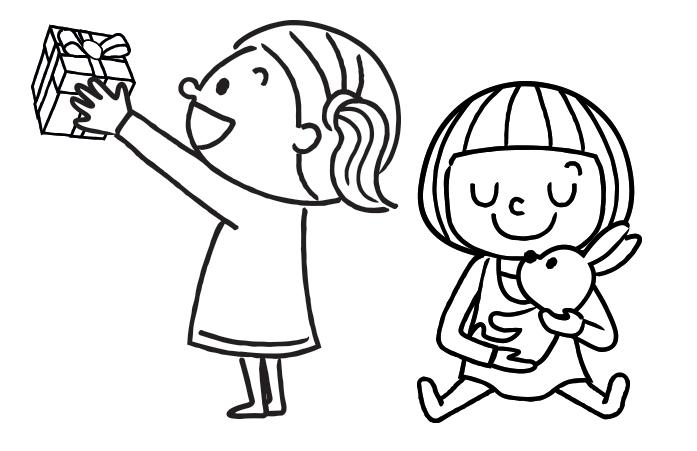
John’s book


John’s mother
The girls’ presents
24 I LIVELLO PROVA INIZIALE (svolgimento guidato) Competenze “in
ingresso”
• Metti in ordine le parole e forma le frasi. is / friend / red / car / my / ’s dress / the / ’s / girl / is / blue the / house / Smiths’ / is / this / street / in is / today / ’s / newspaper / this
• Scrivi tu due frasi utilizzando il genitivo sassone.
• Leggi le seguenti frasi e riconosci se ’ s sta per un genitivo sassone oppure per la forma contratta del verbo essere (is). Collega come nell’esempio

Where are Bob ’s pencils?

George ’s in the garage.
My teacher’s lessons are interesting.
Where’s my book?
Anna’s T-shirt is green. Bob’s very happy today!
• Ora rispondi al quesito B6
Genitivo sassone
Verbo Essere: “is”
25 I LIVELLO
PROVA INIZIALE (svolgimento guidato) Competenze “in ingresso”
Scegli la domanda corretta per la seguente risposta: B7
It’s 3471631972
A. B. C. D.
How old is he?

What’s your address? What’s your telephone number? Where’s your telephone number?
COME SI SVOLGE?


• Per rispondere al quesito B7 devi ricordare le parole interrogative e scegliere quella che ben si accorda alla risposta fornita nel testo.


What ...? When ...? Where ...? How old ...?
PAROLE INTERROGATIVE
Che ...? Quando ...? Dove ...? Quanti anni ...?
What’s your name? When is your birthday? Where is my book? How old is Tony?
Collega con una freccia ogni domanda alla sua risposta.
When is Art? It’s 407 Beal Street
What’s your address?
It’s on Thursday! Where are the flowers? They’re on the table
• Ora rispondi al quesito B7.
26 I LIVELLO PROVA INIZIALE (svolgimento guidato) Competenze “in
ingresso”
PROVA INIZIALE
(svolgimento guidato) Competenze “in ingresso”


Scegli la parte mancante nella seguente frase: B8
My eyes blue.
are is A. B. are they isn’t C. D.

COME SI SVOLGE?
• Per rispondere al quesito B8 devi ricordare le forme del verbo essere (to be) in inglese.
TO BE
I’m you’re he/she/it’s we’re they’re
(I am) (you are) (he/she/it is) (we are) (they are)

I’m not you aren’t he/she/it isn’t we aren’t they aren’t

(I am not) (you are not) (he/she/it is not) (we are not) (they are not)
FORMA INTERROGATIVA
Am I ...? Are you ...? Is he/she/it ...? Are we ...? Are they ...?
Inserisci in ogni frase la forma corretta. AREN’T ARE IS ’S
- My parents tall.
- she ready?
• Ora rispondi al quesito B8
- Paolo my best friend. - What colour your shoes?
27 I LIVELLO
FORMA AFFERMATIVA FORMA NEGATIVA
• Come hai trovato questa prova? Indicalo colorando le caselle da 1 a 10.
Molto facile Molto difficile Facile

• Segna con una X i quesiti a cui hai risposto correttamente.


COMPRENSIONE
• Hai svolto la prova nel tempo stabilito?
28 I LIVELLO PROVA INIZIALE (svolgimento guidato) AUTOVALUTAZIONE
TOTALE RISPOSTE CORRETTE: / 15
DEL TESTO A1 A2 A3 A4 A5 A6 A7
GRAMMATICA B1 B2 B3 B4 B5 B6 B7 B8
What ... ? When ... ? Where ...? How old ... ?
AGGETTIVI POSSESSIVI PRONOME SOGGETTO AGGETTIVO POSSESSIVO
I you he she it we they
my your his her its our their
PAROLE INTERROGATIVE
Che ... ? Quando ... ? Dove ... ? Quanti anni ... ?
What’s your name? When is your birthday? Where is my book? How old is Tony?
THERE IS / THERE ARE
FORMA AFFERMATIVA FORMA NEGATIVA
Singolare

Plurale
There is (There’s) There are
Singolare Plurale
There isn’t (There is not)
There aren’t (There are not)
FORMA INTERROGATIVA
Singolare Plurale
Is there ...? Are there ...?
122 TAVOLE GRAMMATICALI
PREPOSIZIONI DI TEMPO
IN ON AT
parti del giorno i giorni
ore del giorno i mesi le date i pasti le stagioni gli anni
HOW MUCH? HOW MANY?
CORRISPONDE A... Quanto? Quanta? Quanti? Quante?

QUANDO SI USA

ESEMPI

Con i sostantivi non numerabili
How much milk is there in the fridge?
How much chocolate do you eat every day?
Con i sostantivi numerabili al plurale
How many eggs are there in the fridge?
How many bananas do you eat every day?
123 TAVOLE GRAMMATICALI
It’s MINUTE to HOUR
o’ clock half past
PAST
TO quarter to quarter past
twenty past
five past five to ten past ten to twenty to twenty-five to twenty-five past
It’s MINUTE past HOUR
PRESENT CONTINUOUS
FORMA AFFERMATIVA FORMA NEGATIVA FORMA INTERROGATIVA
I’m reading you’re reading he/she/it’s reading we’re reading they’re reading
I you he/she/it we they
’m not reading aren’t reading isn’t reading aren’t reading aren’t reading

Am I reading ...? Are you reading ...? Is he/she/it reading ...? Are we reading ...? Are they reading ...?
TO BE
FORMA AFFERMATIVA FORMA NEGATIVA FORMA INTERROGATIVA
I’m you’re he/she/it’s we’re they’re
(I am) (you are) (he/ she/ it is) (we are) (they are)
I’m not you aren’t he/she/it isn’t we aren’t they aren’t
(I am not) (you are not) he/ she/ it is not (we are not) (they are not)
Am I ...? Are you ...? Is he/she/it ...? Are we ...? Are they ...?
124 TAVOLE GRAMMATICALI
